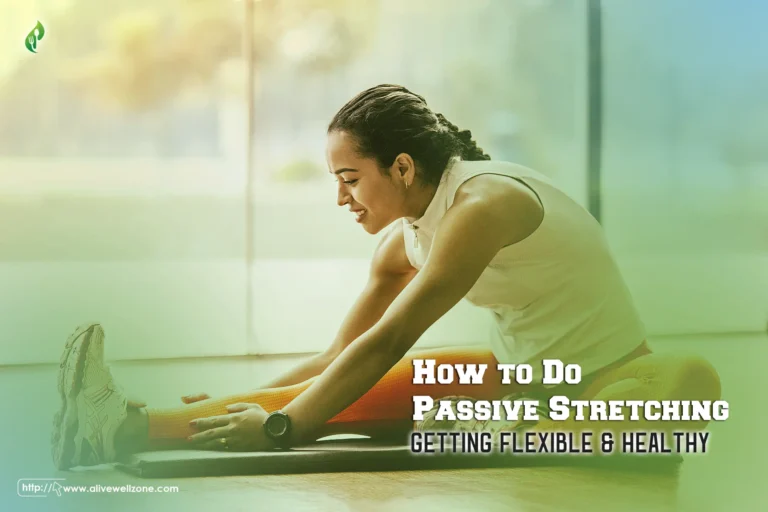
Last Updated on November 8, 2024 by Helena Akter
Bored with your workout routine? Feeling like you’ve hit a plateau and your progress has stalled? If you’re nodding your head, it’s time to shake things up and explore the exciting world of different exercises.
Types of workouts include Cardio, HIIT, Balance Exercises, Flexibility (Stretching, Yoga, Pilates, Mobility Training), Aerobic Exercises, and Strength Training. Plus, Anaerobic Exercises, Circuit Training, Group Fitness, Functional Training, Bodyweight Workouts, Aquatic Exercise, Suspension Training, and Metabolic Training.
Here, we’ll explore the different workout styles, from high-intensity interval training (HIIT) to strength training, cardio, and more. You’ll discover the advantages of each approach and what works for which body so that you can get optimal results.
What Are The Health Benefits Of Exercise And Staying Active?
Staying active and exercising regularly brings a host of health benefits. When you mix up your workout routine with different types of workouts at the gym, your mental and physical well-being will benefit.
Here’s why varying your exercise routine is key —
1. Enjoy a Range of Benefits
Every workout offers its own set of advantages. However, not all exercises impact your health and fitness in the same way. For instance, while flexibility training is great, it doesn’t necessarily increase your heart rate. Thus, it’s less effective at strengthening your heart and lungs compared to, say, cardio training.
On the flip side, running every day might not be the best if you’re looking to become more flexible. In fact, it might even make you less flexible. By incorporating a variety of different types of workouts, you ensure your body gets the diverse challenges it needs.
From heart health to flexibility and strength, this variety helps improve your fitness. Whether you’re into home workouts for beginners or advanced types of workouts with weights, changing things up is key. This approach helps you reach your fitness goals by benefiting different parts of your body and mind.
2. Preventing Weight Loss Plateaus
Sticking to the same workout routine can lead to a standstill in both your fitness progress and weight loss efforts. Your body is incredibly good at getting used to the exercises you do regularly.
A workout that once pushed your limits and helped you grow stronger or lose weight might not challenge you as much over time. Even your metabolism gets used to your routine, meaning you burn fewer calories during the same workout.
To keep improving your fitness and shedding pounds, it’s crucial to mix up your routine. By introducing new and varied exercises, you ensure your body never gets too comfortable. This constant change keeps your body guessing and growing stronger, helping you to break the weight loss plateau.
3. Staying Injury-Free
Mixing up your workouts is also a smart strategy to reduce the risk of injuries. When you explore different types of workouts, you engage various muscle groups and follow different movement patterns. It prevents the same muscles and tissues from being overworked day after day, which can lead to injury.
Whether you’re lifting weights, running, or trying out popular types of workouts like yoga or Pilates, changing your routine protects your body. This way, you stay healthy, strong, and able to continue your fitness journey without unwanted breaks.
4. Keeping Workouts Exciting
Staying interested and eager to exercise is crucial. When you mix up your workouts, you avoid the monotony of repeating the same exercises every day. This keeps each session new and exciting.
Studies have shown that variety in your exercise routine can make you more likely to stick with it. By changing your activities, you challenge your body and keep your mind active. This approach ensures you look forward to your workouts instead of viewing them as a chore.
What are the Different Types of Workouts?

So here are the most popular workouts that you can incorporate in your lifestyle to make your body stronger.
1. Cardio Workouts
Cardio workouts are all about getting your heart rate up to improve your heart health and endurance. These exercises are fantastic for burning calories and increasing lung capacity.
If you enjoy running, cycling, swimming, or jumping rope, you’re already familiar with cardio. These activities improve your energy and help you lose weight fast.
2. High-Intensity Interval Training (HIIT)
If you’re short on time, High-Intensity Interval Training (HIIT) could be perfect for you. HIIT involves intense exercise bursts followed by short rest periods or lighter activity. This method is not only time-efficient but also increases your metabolism, allowing you to burn more calories even after your workout ends.
Now, common HIIT exercises include burpees, sprints, and kettlebell swings.
3. Balance Exercise
Balance exercises might not be the first thing you think of when planning a workout, especially if you’re young. However, they’re beneficial for everyone, not just older adults.
In fact, improving your balance can help prevent falls and injuries, making daily activities and other exercises safer and easier. Balance-focused activities include tai chi, yoga, pilates, standing on one leg, and stand-up paddleboarding.
4. Flexibility
Training for flexibility is key to improving your musculoskeletal health and building your overall fitness. To become more flexible and mobile, you can try stretching, yoga, pilates, and mobility exercises. These activities not only improve your flexibility but also contribute to your mobility.
Stretching
This can be static or dynamic, and either passive or active. Dynamic and active stretches are especially beneficial for functional movements, preparing your body for a range of activities. Plus, you can learn how to do passive stretching to improve your mobility and agility.
Yoga
This popular form of exercise not only boosts your flexibility but also your range of motion. Yoga focuses on precise forms and breathing techniques, combining stretching with isometric bodyweight exercises and a form of moving meditation.
Pilates
Pilates focuses on controlled movements, emphasizing body alignment, breathing, and core strength. It includes many balancing exercises that enhance coordination and stability, making it a great choice for those looking to improve their fitness at home or in the gym.
Mobility Training
To further improve your flexibility and range of motion, consider adding mobility training to your routine. Incorporating foam rolling before and after workouts can offer a deep tissue massage. Foam rollers are portable and can be a convenient tool for home workouts for beginners, helping you reach your fitness goals wherever you are.
5. Aerobic Exercises
Aerobic exercises involve moving large muscle groups in a way that makes your heart beat faster. These exercises are great for your heart and can significantly improve your cardiovascular health.
Depending on how fit you are, you’ll adjust how long and how intensely you do these exercises. There are different kinds of aerobic exercises you can try, including steady-state, low-intensity, and moderate-intensity workouts.
Steady-State Workouts
In these exercises, the key is to keep a consistent pace throughout your workout, regardless of how intense it is. The aim is to maintain this steady pace for the entire duration of your exercise session.
Low-Intensity Workouts
These are gentler on your body, keeping your heart rate at 50% below your maximum. If you enjoy brisk walks or leisurely bike rides, you’re already doing low-intensity aerobic exercises.
Moderate-Intensity Workouts
These exercises get your heart rate to 50% to 70% of its maximum. They’re more challenging than low-intensity workouts, but you should still be able to talk while doing them. Activities like running, swimming, or hiking are great examples of moderate-intensity aerobic exercises.
6. Strength Training
Engaging in strength training means you’re focusing on exercises that boost your muscle power and size. It’s a key part of staying fit, helping you keep your muscles strong as you get older. Usually, this involves weightlifting or using machines that add resistance at the gym.
However, don’t overlook bodyweight exercises such as push-ups, squats, and planks; they’re great for increasing strength too. By mixing these different strength-building activities into your routine, you can speed up your metabolism and boost your health.
7. Anaerobic Exercises
While anaerobic exercises share similarities with aerobic ones, they challenge your body to produce energy in the absence of oxygen. These activities are quick and vigorous. Examples include high-intensity interval training (HIIT), lifting weights, and doing circuit workouts.
Unlike aerobic exercises, which allow your body to consume oxygen, anaerobic exercises like sprinting demand intense energy bursts, depleting your oxygen supply quickly.
8. Circuit Training
Circuit training is all about moving through a set of exercises one after the other with little rest in between. This approach works various muscle groups and can be tailored to fit your fitness level, making it great for either strength, cardio, or a combination of both.
It’s an effective way to keep your heart rate high and tackle multiple aspects of fitness in one go.
9. Group Fitness Classes
For those who love the energy of a crowd, Group Fitness Classes are a perfect choice. Whether it’s Dance Fitness, Water Aerobics, or Group Cycling, these classes offer a lively way to exercise. They’re not just about getting a good cardio workout; they’re also a chance to pick up new skills and connect with others who share your fitness goals.
10. Functional Training
Functional training is all about exercises that help you with everyday actions like bending, lifting, reaching, and twisting. You’ll work several muscle groups at once, focusing on improving your flexibility, balance, and coordination.
As these muscles get stronger, you’ll notice everyday tasks like carrying groceries, lifting luggage, or doing housework become much easier.
11. Bodyweight Workouts
For those who prefer not to use equipment, bodyweight workouts are an excellent choice. These exercises use your own weight for resistance, so you can do them anywhere, at any time.
Examples include push-ups, squats, lunges, and planks. They’re fantastic for building strength and enhancing both your balance and flexibility.
12. Aquatic Exercise
Exercising in water is both fun and beneficial. It includes a variety of movements and exercises done in a pool, offering a great workout with minimal stress on your joints. This makes it perfect for anyone with joint problems, arthritis, or recovering from injuries.
The fitness world is vast, with workouts to suit every goal and preference. By trying out different exercises, you can keep your routine diverse and exciting, keeping you motivated to get healthier and stronger.
13. Suspension Training
Suspension training uses bodyweight exercises where you perform movements suspended from straps anchored to a stable point. This type of workout puts your stability and strength to the test by using gravity and your body’s position.
14. Metabolic Training
Though not always recognized as a separate exercise category, metabolic training plays a crucial role in fitness. It includes intense activities like high-intensity interval training (HIIT) and circuit training, blending elements of both cardio and strength training.
This approach improves your metabolism, helping you burn calories more efficiently.
Best Types of Workouts If You Want to Gain Weight
If your aim is to gain weight, focusing on types of workouts with weights, namely strength and resistance training, is your best strategy. It’s similar to muscle-building routines but involves lifting even heavier weights to effectively bulk up.
To increase muscle mass, it’s crucial to progressively challenge your muscles. This means gradually increasing your workout’s intensity by adding more reps, sets, or weight, or by trying different exercises.
Popular types of workouts for gaining muscle include lifting heavier weights over time, which powerlifters and bodybuilders do with few repetitions.
Research, such as the 2012 study “Resistance training is medicine: effects of strength training on health,” shows that ten weeks of resistance training can add about 1.4 kg (3 pounds) of lean muscle.
For those looking to build muscle fast, focus on compound exercises like squats, deadlifts, bench presses, barbell rows, and overhead presses. These are highly effective for muscle growth.
So, aim for four sets of 6 to 8 reps, adding weight every few weeks to continuously challenge your muscles and achieve body benefits.
Best Types of Workouts If You Want to Lose Weight
Now if you want to lose weight, following workouts could be your best option.
Cardio
Cardio training is your go-to if shedding pounds is your aim. This type of workout focuses on aerobic exercises that boost your heart and lung health. Essentially, cardio gets your heart rate up and your lungs working harder, which is great for cardiovascular strength.
Research in the journal Progress in Cardiovascular Diseases shows that regular aerobic exercise can lead to noticeable weight loss. So, even if cardio is the only exercise you engage in, you can still see significant results. This makes it one of the best types of workouts for those looking to lose weight.
HIIT
HIIT (High-Intensity Interval Training) is an excellent addition to your exercise plan, especially if you’re aiming to lose weight. Unlike aerobic and steady-state cardio workouts, HIIT is anaerobic, meaning it burns stored carbohydrates without relying solely on oxygen. This makes HIIT highly effective for weight loss.
In a HIIT session, you push yourself to the maximum, working at 90-100% of your capacity for short bursts. Even though HIIT includes rest periods, these intense bursts make you breathe harder and can burn more fat than traditional, steady-paced cardio.
Studies, like one in Obesity Science & Practice, show that HIIT can lead to more significant body fat loss than regular cardio exercises.
Weight Training
Don’t overlook weight training, even if your goal is to lose weight rather than gain muscle. Lifting weights is key to building muscle, which boosts your resting metabolic rate (RMR)—the number of calories your body burns while at rest.
A study in Medicine & Science in Sports & Exercise found that participants who did strength-based exercises for just 11 minutes three times a week increased their RMR by 7.4% over six months. Now, that’s equal to burning an extra 125 calories daily, significantly helping weight loss efforts.

Best Types of Workouts If You Want to Maintain Weight
After reaching your goal weight, maintaining it involves continuing cardio exercises, as they’re key to keeping weight off. Research in Nature Clinical Practice Endocrinology & Metabolism stresses the importance of balancing calorie intake with expenditure.
Further, Progress in Cardiovascular Diseases suggests that 200 to 300 minutes of exercise per week is effective for weight maintenance. Plus, regular cardio post-weight loss significantly helps in keeping the weight off.
For muscle maintenance, keep up with resistance training, crucial as muscle mass naturally declines starting around age 30. The focus shifts from increasing weight to possibly using heavier weights as you grow stronger, with lower-weight, higher-repetition exercises to stay toned without bulking.
Nutritionally, a high-protein diet is vital for preserving muscle mass, underscoring the importance of adequate protein intake for maintaining gains.
Best Type of Workouts for Endomorph Type of Body
For those with an endomorph type of body, characterized by a pear or hourglass shape, broader hips, and a tendency to store fat in the lower body, managing weight can be challenging due to a slow metabolism. Simply dieting often isn’t enough; a mix of cardio and strength training is essential to kickstart the metabolism.
Effective Endomorph Workouts Include —
- Running or Walking
- Cycling
- Swimming
- Aerobics
- Rowing
- Cross country skiing
- Powerlifting
- High-intensity Circuit Training (HITT) involving fast repetitions
- Snowshoeing
- Plyometrics
Cardio goal: To reduce fat and increase metabolic rate, engage in HIIT, Tabata, jump rope, and sprinting. Aim for a 250-300 calorie daily deficit through 30-40 minutes of activity.
Goal for weight training: Build muscle definition with high reps (15 per exercise) across 2-3 sets using light weights, medicine balls, stretch bands, and bodyweight exercises. Focus on comprehensive workouts targeting the upper body, lower body, and core, with special attention to core exercises like dead bugs and planks to slim the waist.
Best Type of Workouts for Ectomorpht Type of Body
For the ectomorph physique, which is characterized by a slim, tall, and lean build with a fast metabolism, gaining muscle can be a challenge. Ectomorphs are naturally endurance-oriented and can maintain leanness with minimal cardio.
Effective Ectomorphs Workouts Include —
- Sports like distance cycling or running
- Combination exercises that train multiple muscles simultaneously (as opposed to isolation training)
- Indoor cycling
- Marathons or triathlons
- Cross-country skiing
- Racquet sports
- Circuit training
- Body sculpting
Cardio goal: Ectomorphs may gravitate towards endurance activities, but it’s better to switch to high-intensity interval training (HIIT). HIIT helps maintain cardiovascular health without overemphasizing long, lean muscle development. Thus, aim for short, intense cardio sessions of 30 to 45 minutes, 3 to 5 times a week.
Goal for weight training: To gain muscle, ectomorphs should prioritize lifting heavier weights with fewer repetitions. Opt for 8-12 reps across 1-3 sets to enhance muscle strength, size, and bone density. Incorporate compound exercises such as lat rows, chest presses, and leg presses to engage multiple muscle groups.
For bodyweight exercises, push-ups, squats, and lunges are great for building strength in the upper body, glutes, and legs, respectively. Also, work on your core to define the waistline and achieve a more sculpted appearance.
Best Type of Workouts for Mesomorph Type of Body
For mesomorphs, who are naturally athletic owing to a medium build and a lot of muscle, staying fit is easier with an efficient metabolism. They typically have wide shoulders and a narrow waist, and can easily adjust their weight.
Effective Mesomorphs Workouts Include —
- Indoor Cycling
- Power-based sports
- Sprinting
- Crossfit
- Steady-state, low-intensity cardio
- Soccer
- Weight lifting
- Hockey
- Interval Training
- Rugby
Cardio goal: Mesomorphs should aim for 30 to 45 minutes of cardio, 3 to 5 times a week. Mixing steady-state exercises with high-intensity interval training (HIIT) works best. This approach helps maintain fitness without the need for constant, long cardio sessions.
Goal for weight training: The focus should be on a mix of strength and stamina training. For muscle growth and fat loss, engaging in activities like indoor cycling, power sports, sprinting, CrossFit, and team sports such as soccer and hockey is beneficial.
Strength training should be in the range of 8 to 12 reps across 1 to 3 sets per exercise, whereas endurance training should use lighter loads. Adding activities that improve balance, stability, and coordination can also improve strength and stamina without excessively bulking up the muscles.
Why You Should Combine Workout Types
Mixing different types of workouts can greatly benefit both your physical and mental health. If you’re someone who exercises regularly, consider getting advice from a fitness expert. They can help you organize your workout schedule into cycles.
This approach varies your training’s focus on things like how much you do, how hard you work, and the kinds of exercises you do. It’s designed to boost your overall performance and get you in top shape for specific events, like a triathlon.
Blending training styles, like endurance and strength workouts, not only builds physical strength but also toughens you up mentally. It might even help you lift heavier weights or exercise longer after doing endurance activities.
To push your limits, try exercises that combine strength and endurance. Examples include doing a plank with a row or a squat with a press. You might also use machines that let you change the intensity as you go.
What Workout Type Is Right For Me?

Finding the right workout for you depends on several factors, including what you aim to achieve, your likes, your current fitness level, and any health issues you might have. Here’s how to choose wisely —
Set Clear Fitness Goals
Start by figuring out what you want from your workouts. Whether it’s weight loss, muscle building, better endurance, more flexibility, or overall health, knowing your goals helps you pick the right kind of exercise.
Consider Your Health
If you have any health problems, keep them in mind. It’s a good idea to talk to a doctor before starting any new workout routine. Some exercises might be more suitable or need to be adjusted for your condition.
Pick What You Like
Think about what kinds of activities you enjoy. Whether you love being outdoors, joining group classes, or working out alone, you’re more likely to stick with exercises that you find fun.
Listen to Your Body
Notice how you feel during and after different workouts. If you enjoy them and feel good afterward, that’s a great sign. But if you’re in pain or really dislike the activity, it might not be the right fit.
Add Variety
Don’t hesitate to mix up your routine. Trying a variety of workouts can keep things interesting, help avoid injuries from doing the same thing too often, and ensure you’re getting a balanced workout.
Conclusion
When you mix up your workouts, you make your fitness journey more interesting and benefit from a wide range of health perks. These include better weight control and lower risk of injuries. Changing your exercises keeps your sessions fresh and effective, helping you to achieve any weight goal—losing, gaining, or maintaining.
Adding variety to your workout plan helps break the boredom of doing the same thing every day. It also challenges your body in new ways, important for breaking through any standstill in progress. No matter your body type or fitness aspirations, the perfect combination of exercises is out there for you.
So, explore into the different types of workouts, pay attention to how your body responds, and stick with what you find enjoyable and can keep up with regularly. Start experimenting with the suggested workouts to create a fitness routine that fits you perfectly. Taking this approach ensures a fulfilling fitness journey.
types of workouts FAQs
How much physical activity do adults need?
Adults need a certain amount of exercise to stay healthy. According to the Centers for Disease Control and Prevention (CDC) and the UK Government, you should aim for at least 150 minutes of moderate exercise or 75 minutes of intense exercise every week. Additionally, the American College of Sports Medicine and the CDC suggest doing full-body strength training 2 to 3 times a week.
What exercises get you ripped?
If you’re looking to build muscle, there are eight key exercises to include in your routine: deadlifts, squats, bench presses, power cleans, reverse bent-over rows, military presses, pull-ups, and dips. Squats and deadlifts are especially crucial.
What are the 3 main workout types?
There are three primary types of exercise: aerobic, muscle-strengthening, and bone-strengthening. Activities that improve balance and flexibility are also good for you. Aerobic exercises, which increase your heart rate and breathing, are great for your heart and lungs.







